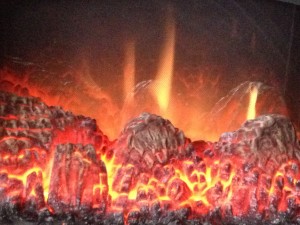For me, the secret to staying inspired is movement.
Whether it means that I move my fingers across the keyboard from the moment I sit in my writing chair until I leave, or that I get up for regular dance or tea breaks, it’s shifting my body that shakes ideas loose.
I think ideas are sticky. They’re the product of all kinds of processes and I think they get stuck in our heads and it can be hard to pry them out.
This is why movement works.
Instead of concentrating on the outcome or the absence of an idea, you shift your focus and move.
Much of day we shorten our gaze to the width of a screen. Whether it’s on a phone, a computer or a television, that flat screen defines the span of what we encounter. Despite the knowledge literally at our fingertips, creativity can flatten and shrink during the hunt for small pieces of information if we don’t expand our gaze.
There are moments when you need to narrow your focus. Instances when the ability to zero on your quarry is what allows you to push through a deadline with the requisite number of words.
But to create those moments when the work feeds itself, I need to allow it to come to me. Instead of hunting creativity, I need to let it find its way into my story.
I do some of that by removing doubt.
After I walk the dog, unless there’s blood or fire, I’m going to eat breakfast and write for two hours. Whether or not I feel like it or am inspired is irrelevant. It’s what I do at that time of the day.
Once I’m in my writing room, I follow a set pattern of turning on the electric fireplace, the weird dolphin light I got at Good Will and lighting my candles. My dog gets off his bed and stretches out on the cool basement floor and I make my fingers move. I don’t stop to think if what I’m writing is good or if I like the scene I’m working on because I might not like the answer. And more importantly, when I get to the editing process, I might find out that “writing me” was wrong.
Thanks to NanoWrimo training, I write through to the end of the story and when it’s done, I start the next one, because it’s easier to keep going than it is to get started.
Momentum works.
And movement, done with intention, can keep the momentum going.
Instead of zeroing in on your screen or book or task at hand, softening your gaze allows you to notice things out of the corner of your eye. Lulling your brain with rhythmic movements allows it to relax and make connections between a random comment on Facebook, the music playing through your speakers and the trouble with the pacing your last chapter.
Movement done in a relaxed, steady manner, whether it’s walking, dancing or loading the dishwasher replaces chasing after the story with an invitation for it to come to you.
This is easier if you pay attention to your breath. Allowing your in breath to descend into your diaphragm to spread your ribs like wings and following the breath through a complete exhale can help you relax enough to let your story find you.
If all of this sounds like yoga or meditation, you’re close.
For me, creativity comes when I achieve a state of trance. I can get there through rhythmic movement or immersing in a task, but it’s the product of relaxed action.
This doesn’t come easily.
It’s not like you can go sit wherever you write, snatch a couple of breaths and tell yourself to relax and it will work. Especially when faced with multiple demands on your time, the state can be hard if you haven’t laid the groundwork. This takes practice. You have to train both your mind and your body.
Figure out when you do your best work by trying to write at different times of the day. See if that time meshes with your schedule, which may take some rearranging. (My best time doesn’t work for mine or I’d have written this at three in the morning when the only sound is the world breathing.) If you have too much to do, get your writing done first. Even that shift in priority can provide the perspective to receive other ideas throughout the day.
Because you’re in a story mind, co-workers may offer bits of dialogue or plot points. You might encounter colors or situations that suit your plot.
Putting your story first sets you up to receive inspiration instead of chase it.
Because inspiration is a little like love — it finds you best when you’re doing something else.
